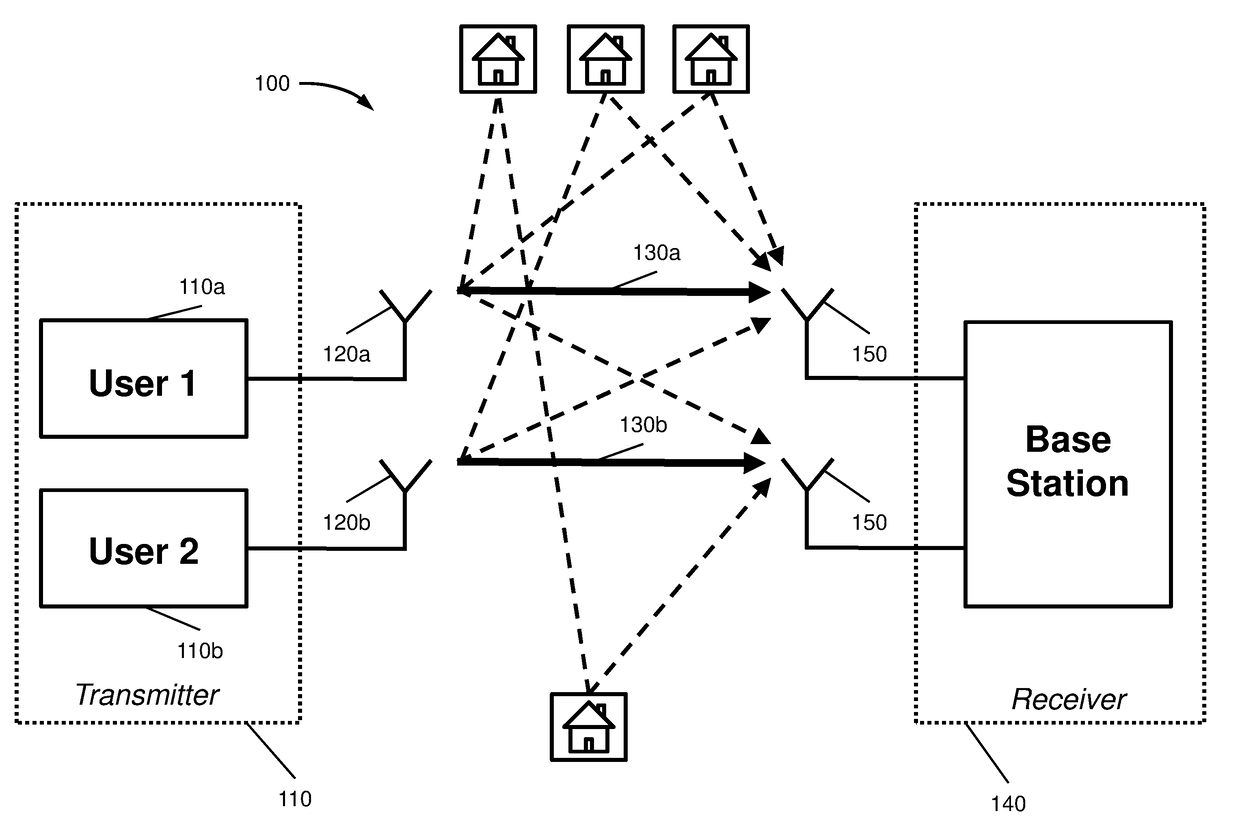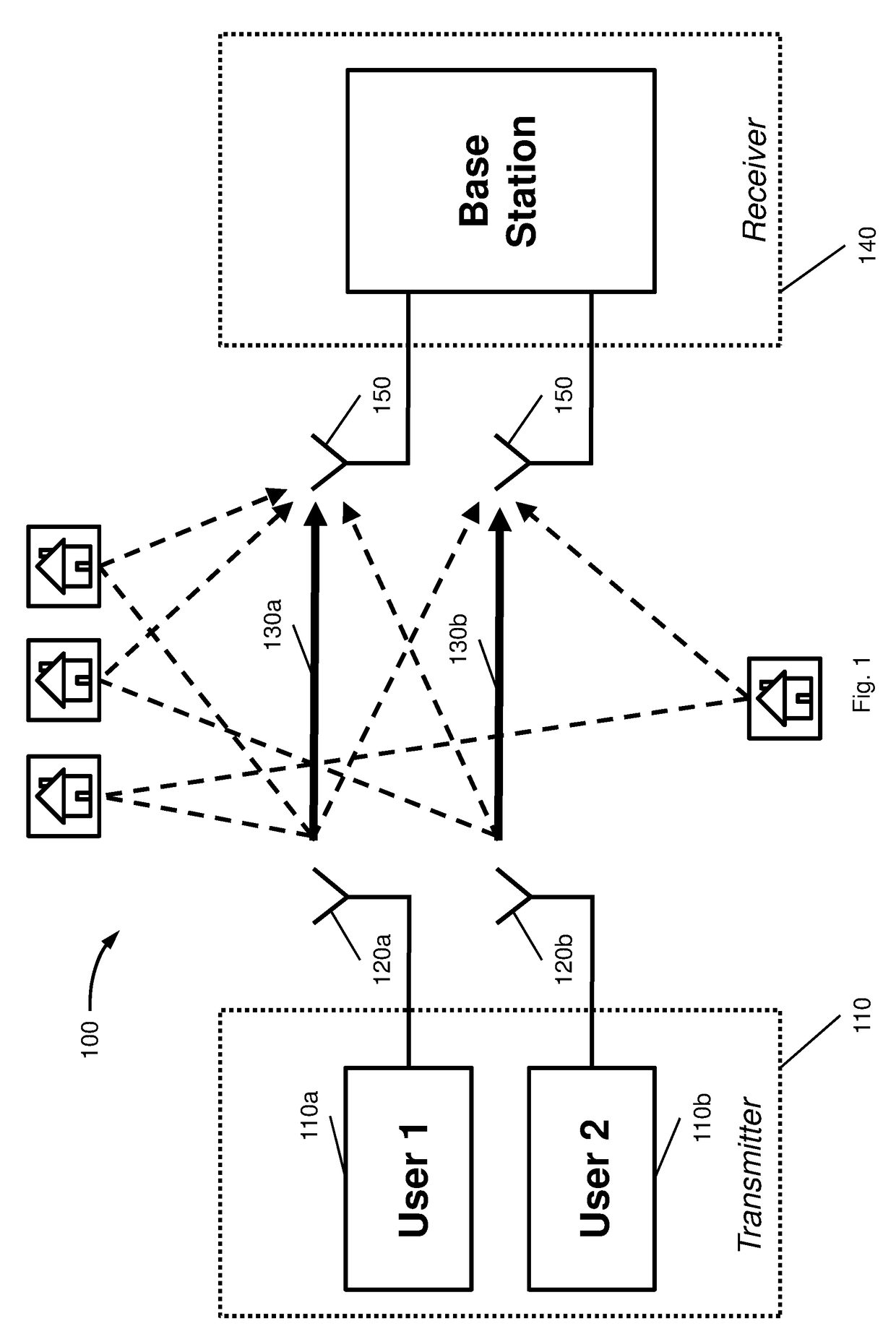Double iterative MIMO receiver
a receiver and iterative technology, applied in the field of wideband mimo receivers, can solve the problems of inability to fully realize the full range of the receiver,
- Summary
- Abstract
- Description
- Claims
- Application Information
AI Technical Summary
Benefits of technology
Problems solved by technology
Method used
Image
Examples
Embodiment Construction
[0020]FIG. 1 depicts a wireless Multiple-Input and Multiple-Output (MIMO) communications system 100. System 100 comprises at least one transmitter 110 comprising at least two antennas 120a, 120b that radiate signals 130a and 130b to a receiver 140.
[0021]Transmitter 110 comprises a plurality of at least two transmit antennas 120a, 120b for transmitting signals at the same time and on the same frequency, i.e. using the same radio resource. In one embodiment the transmitter may comprise at least two separate devices 110a and 110b each comprising a transmit antenna, wherein the devices may transmit using the same radio resource. Devices 110a and 110b, respectively may be operated by separate users. In an alternative embodiment transmitter 110 may be implemented by one physical device comprising at least two transmit antennas, wherein said device may be operated by one user.
[0022]A plurality of transmitters 110 may be dispersed throughout the system 100, and each transmitter may be eithe...
PUM
 Login to View More
Login to View More Abstract
Description
Claims
Application Information
 Login to View More
Login to View More - R&D
- Intellectual Property
- Life Sciences
- Materials
- Tech Scout
- Unparalleled Data Quality
- Higher Quality Content
- 60% Fewer Hallucinations
Browse by: Latest US Patents, China's latest patents, Technical Efficacy Thesaurus, Application Domain, Technology Topic, Popular Technical Reports.
© 2025 PatSnap. All rights reserved.Legal|Privacy policy|Modern Slavery Act Transparency Statement|Sitemap|About US| Contact US: help@patsnap.com



